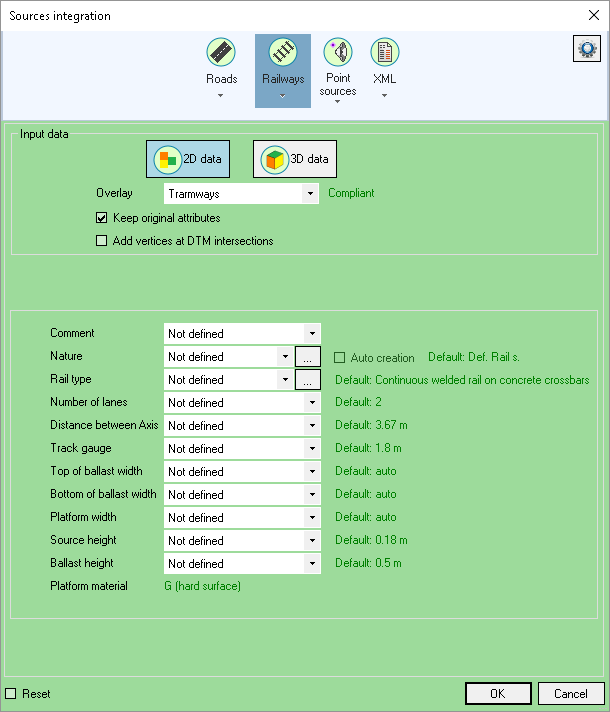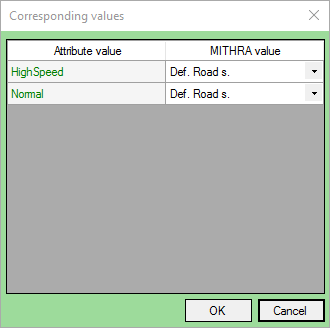|
<< Click to display Table of content >> Integration of railways |
  
|
|
<< Click to display Table of content >> Integration of railways |
  
|
Pour intégrer les voies ferrées :
•From the ribbon Model, click on the button ![]() in the group Integration. The Sources integration box is displayed.
in the group Integration. The Sources integration box is displayed.
•Click on the Railways buttons.

Railway integration interface
•Enter the origin of the data:
oIf the data is in 2D, click on the 2D data button.
oIf the data is in 3D, click on the 3D data button.
oThe name of the Overlay containing the data to be integrated.
•Select the attributes (if 'Not defined' it is the default parameter in green that is used):
oA Comment.
oThe Nature with either automatic creation (if it does not already exist), or with establishment of corresponding values: then the value of the original attributes should match the MITHRA values.

Corresponding vlaues for natures
oThe Rail type with the establishment of corresponding values (See Nature). The options for types of rail are:

oThe Number of Lanes.
oThe Distance between axis.
oThe Track gauge.
oThe Widths at Top and Bottom of ballast.
oThe Platform width.
oThe Source height.
oThe Ballast height.
oThe Platform material (See default parameters). The options for values are:

The Keep original attributes option allows you to keep the attributes of objects in the original overlay.
The Rounded coordinates option allows you to round coordinates of all lines vertices.
The Add vertices on DTM intersections option allows you to create vertices on DTM triangles intersections (compliance with existing DTM).
The Reset option deletes all old rails already present. By unchecking this option you add the objects to the existing 'Rail' overlay. It is then possible to make several successive integrations in different geographical areas and for different polygons.
•Click OK to confirm.
|
The 'auto' value denotes that, based on different characteristics, the attributes with this value will be calculated automatically. At the end of the integration, a message appears if there are railways that could not be draped: they are then at an elevation of -999.0 m and must be corrected by the user. If there have been problems (missing or inconsistent attributes), an XML error file opens automatically and show a list of errors classified by type. The incorrect origin line is identified either by its object identifier or by the coordinates of its first point (if the origin data set has been inserted and is not modifiable).). |
|---|